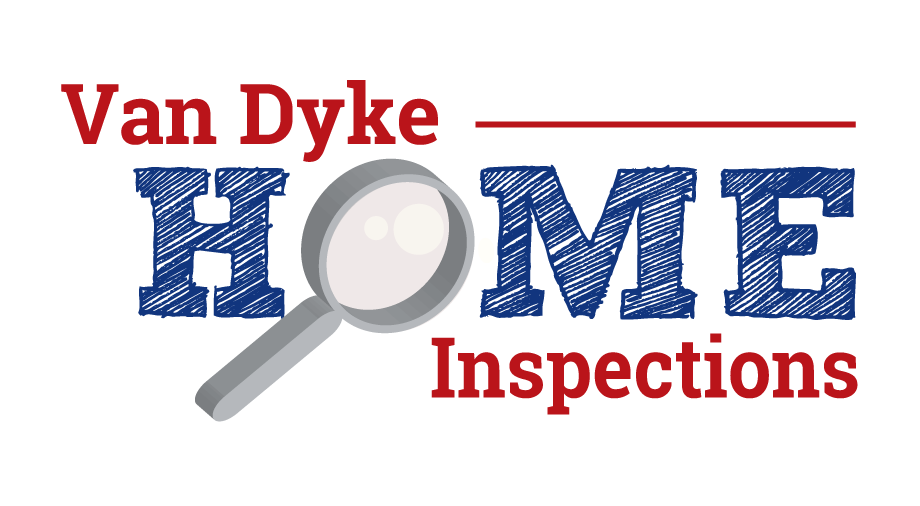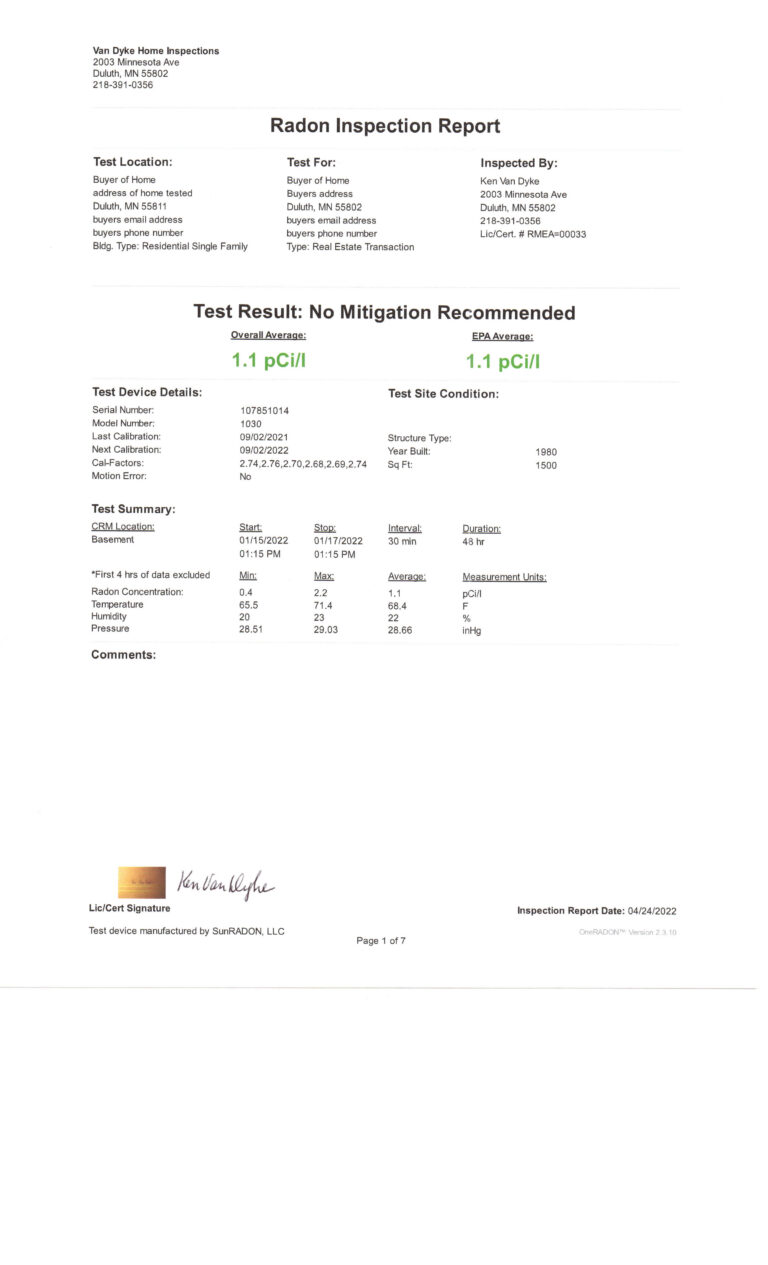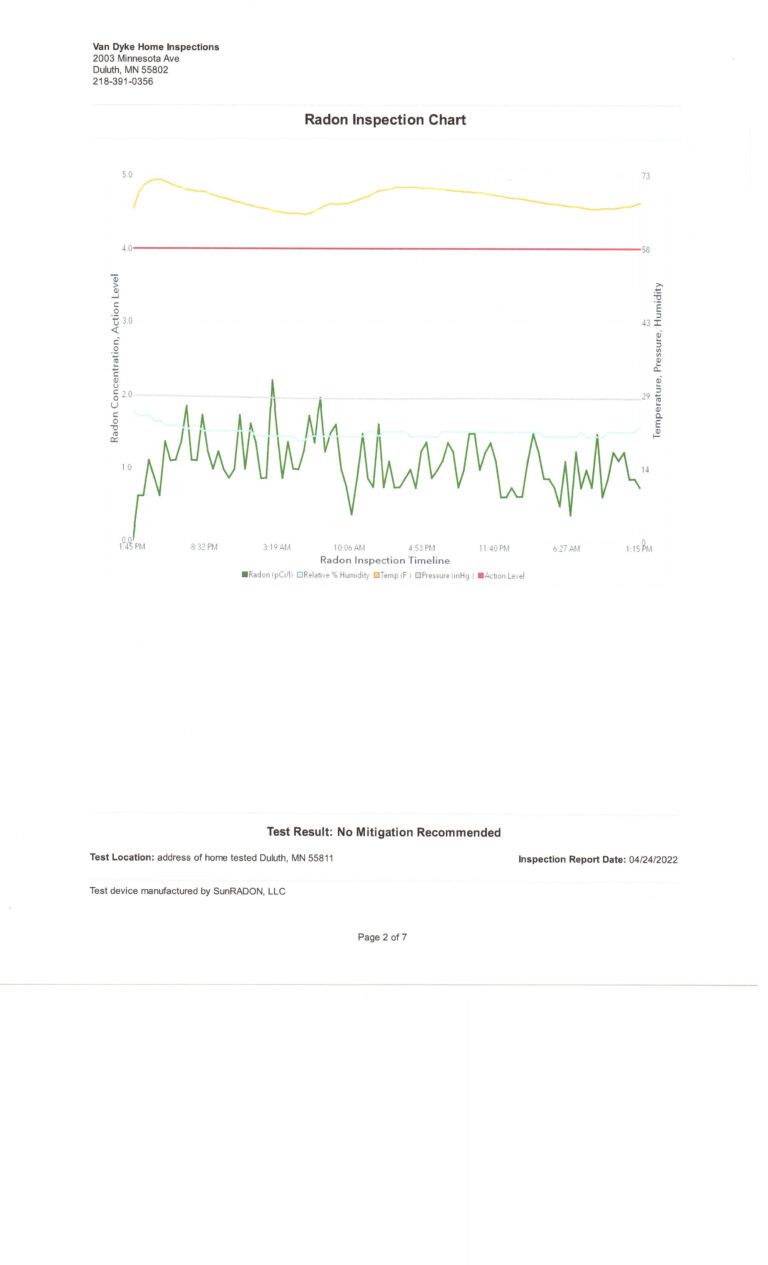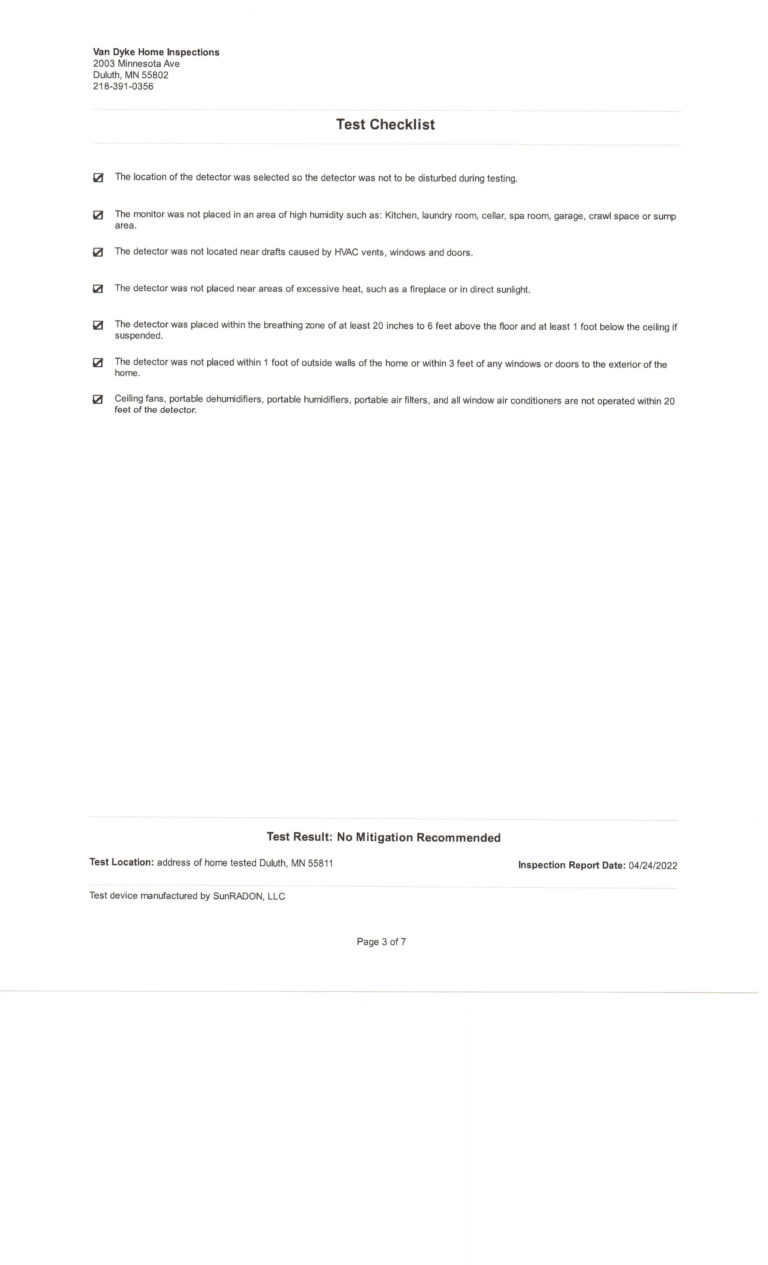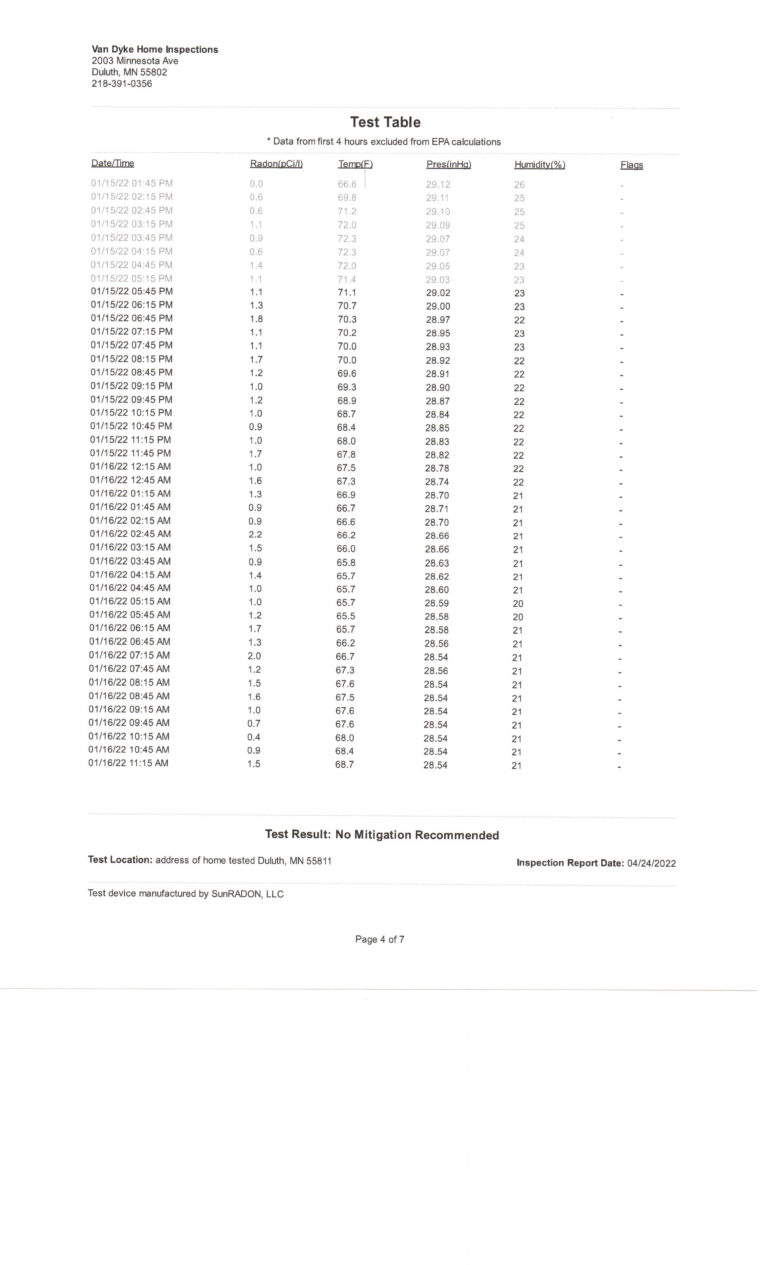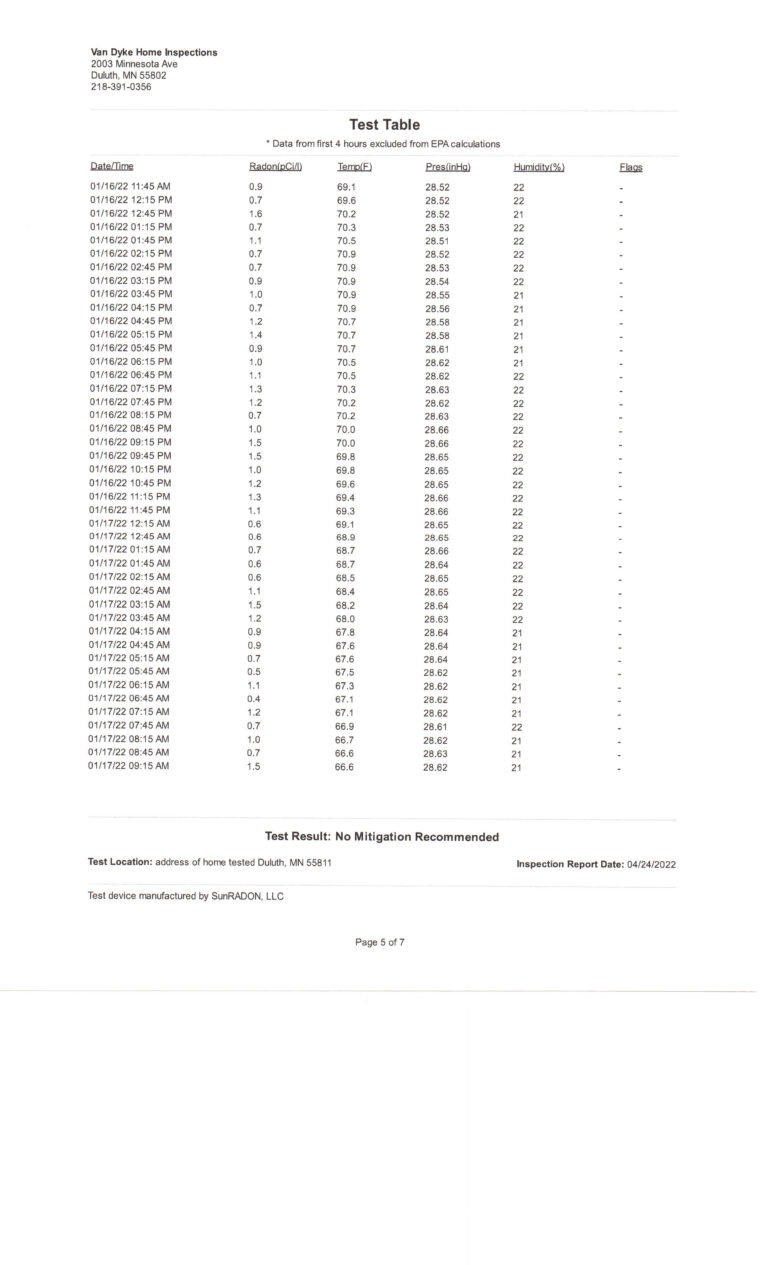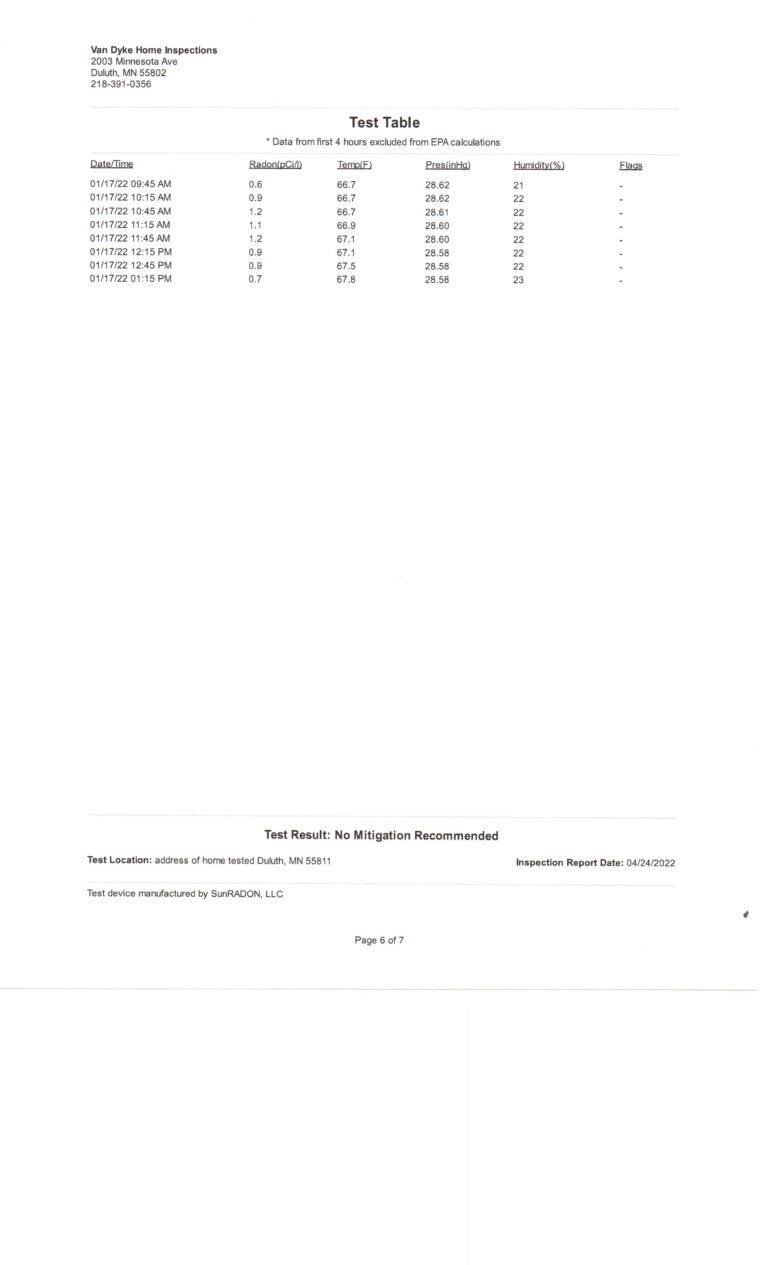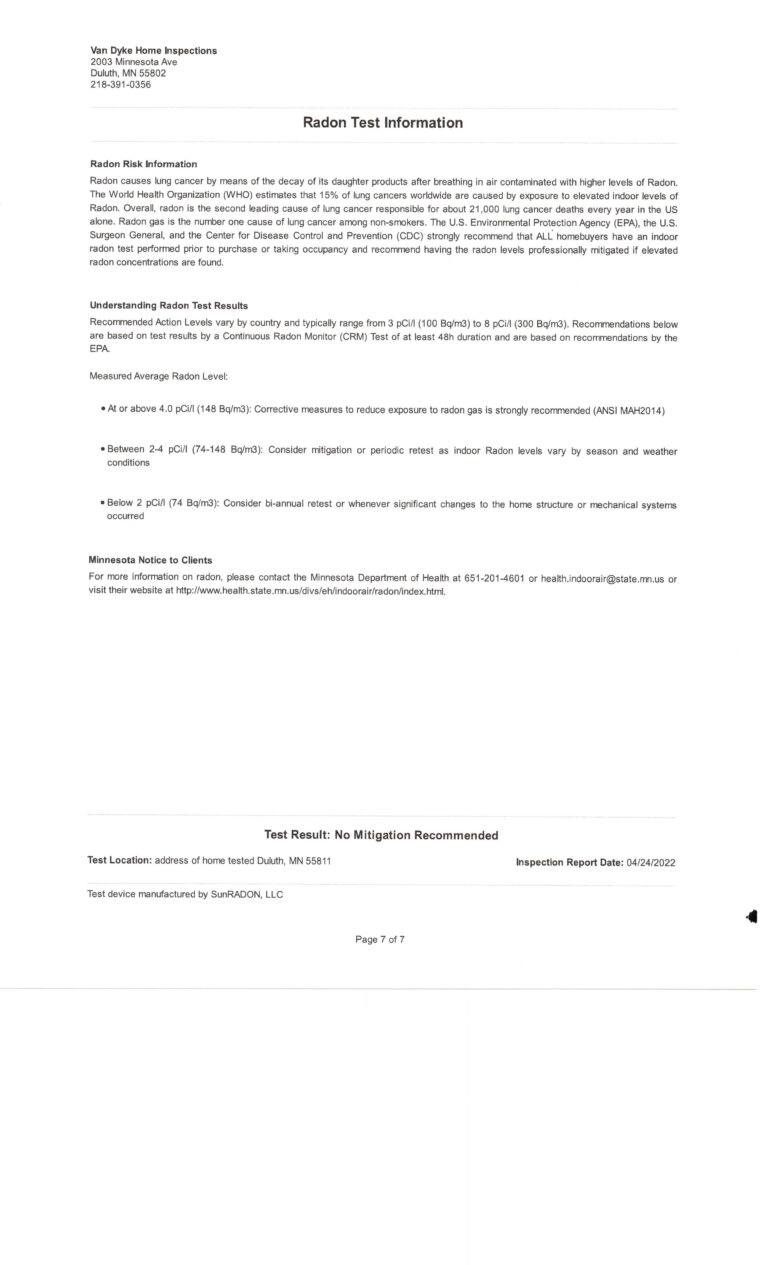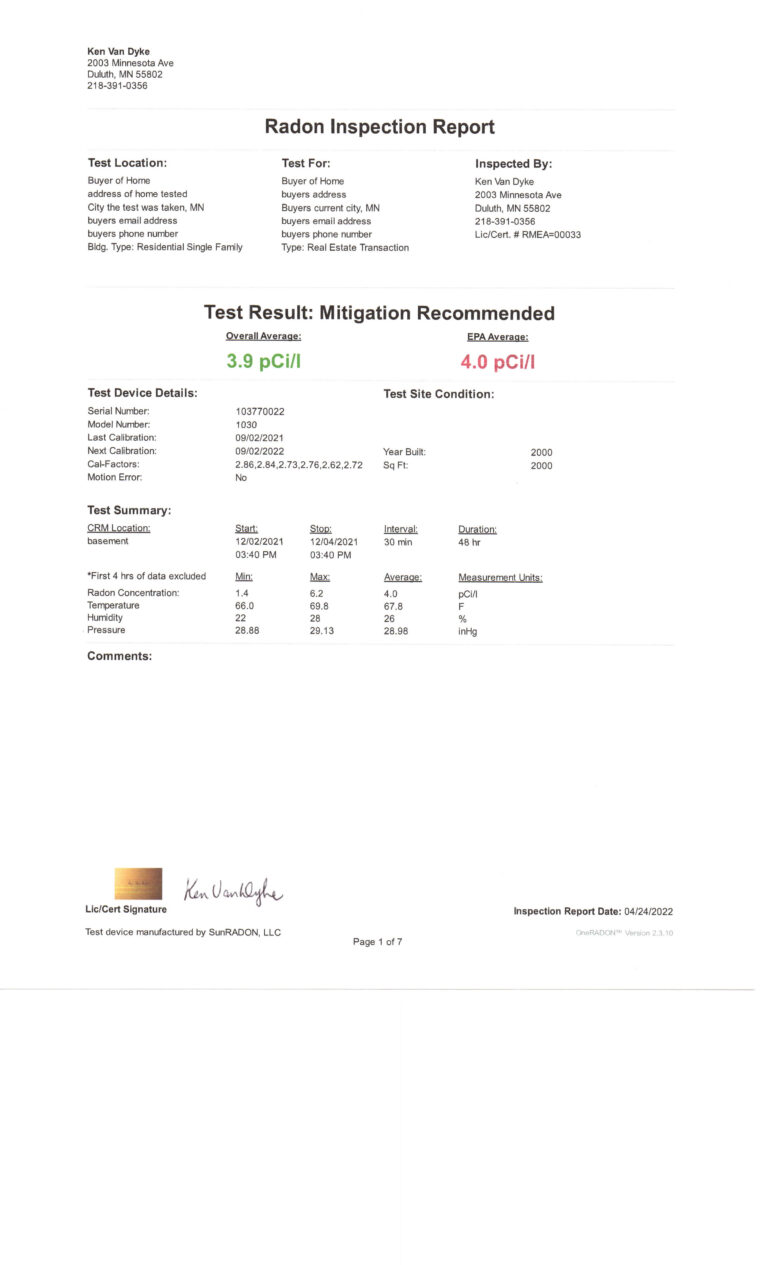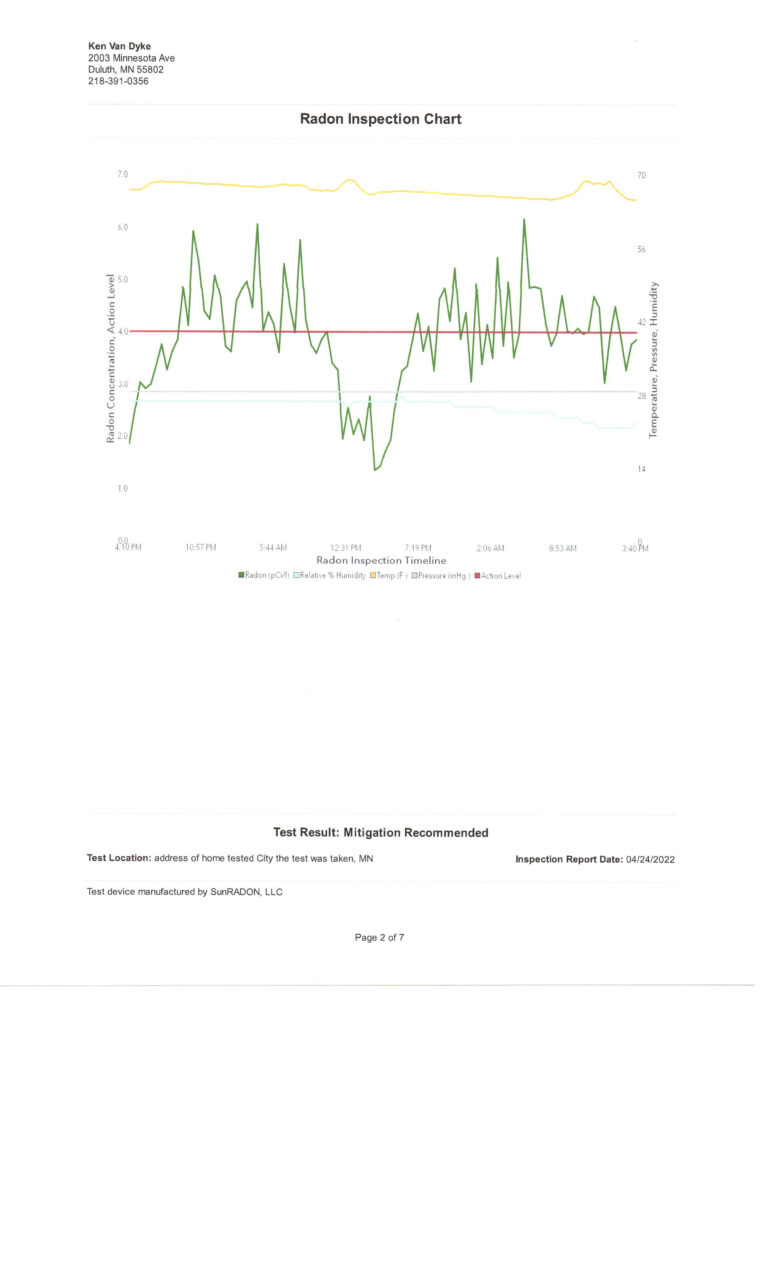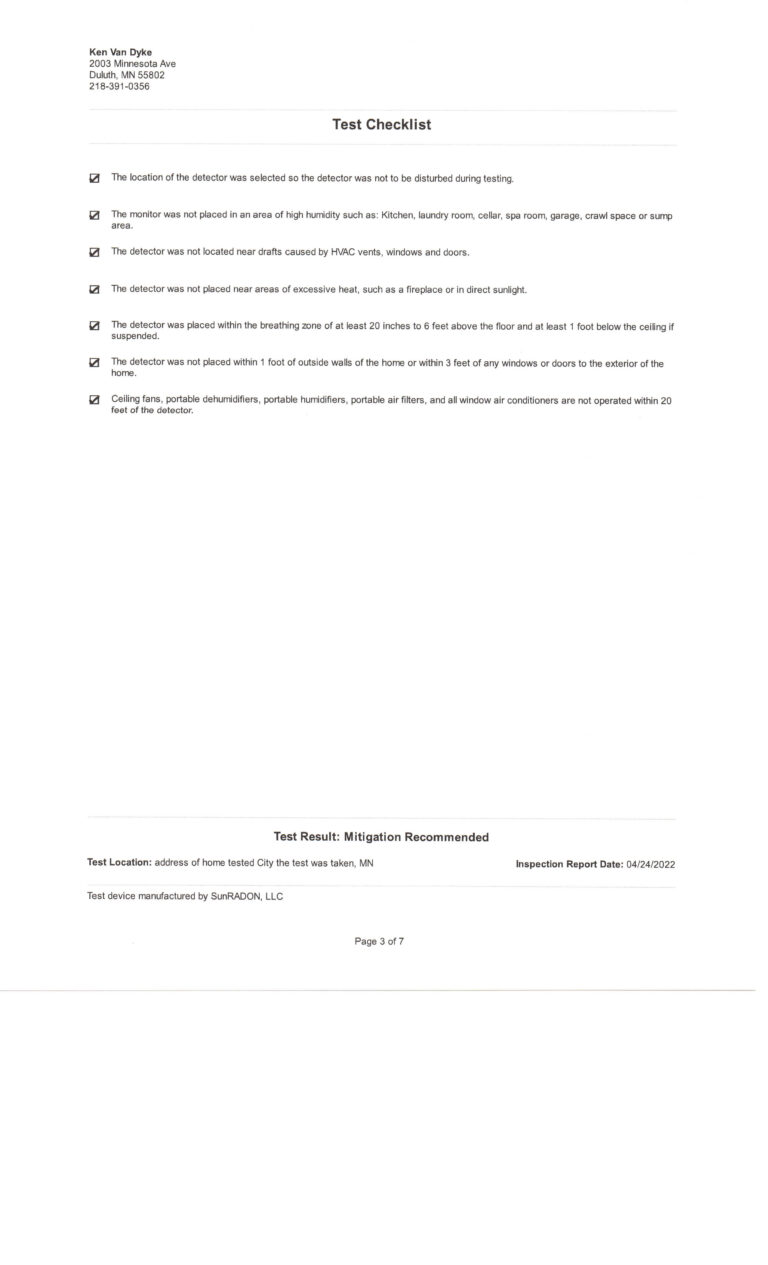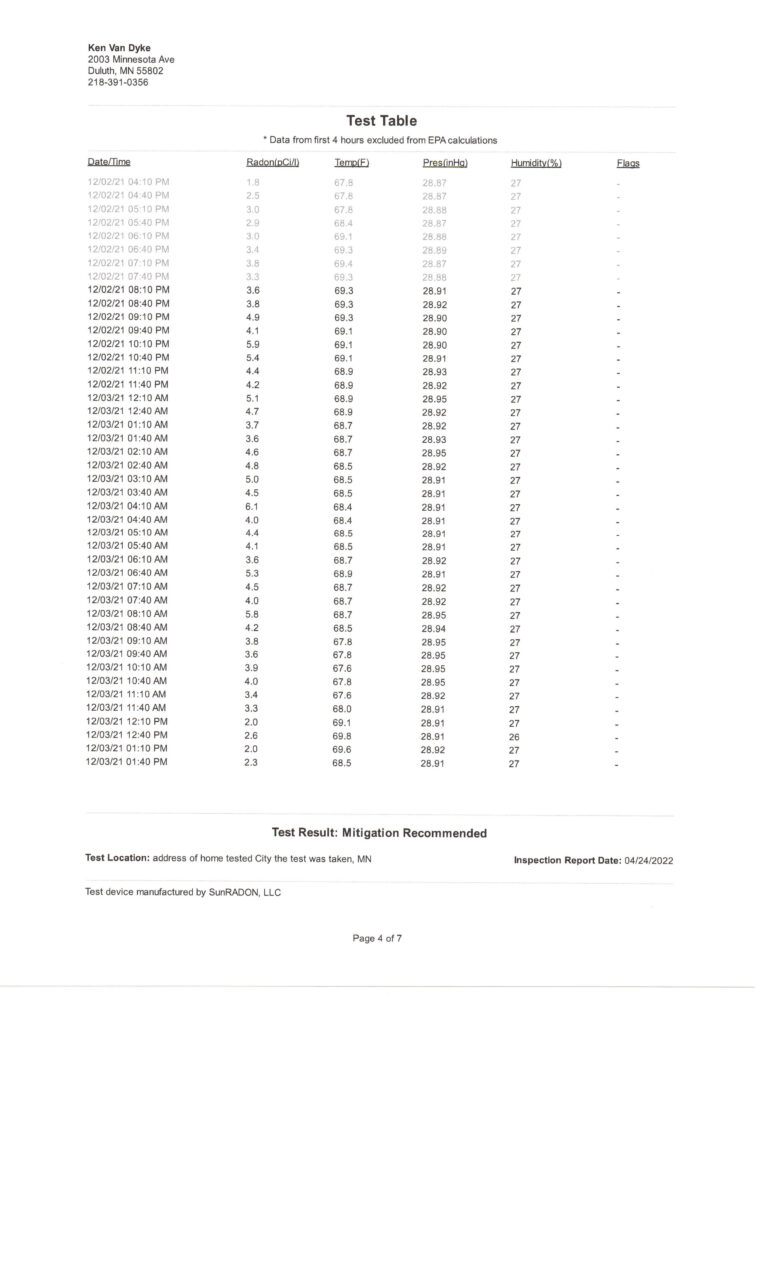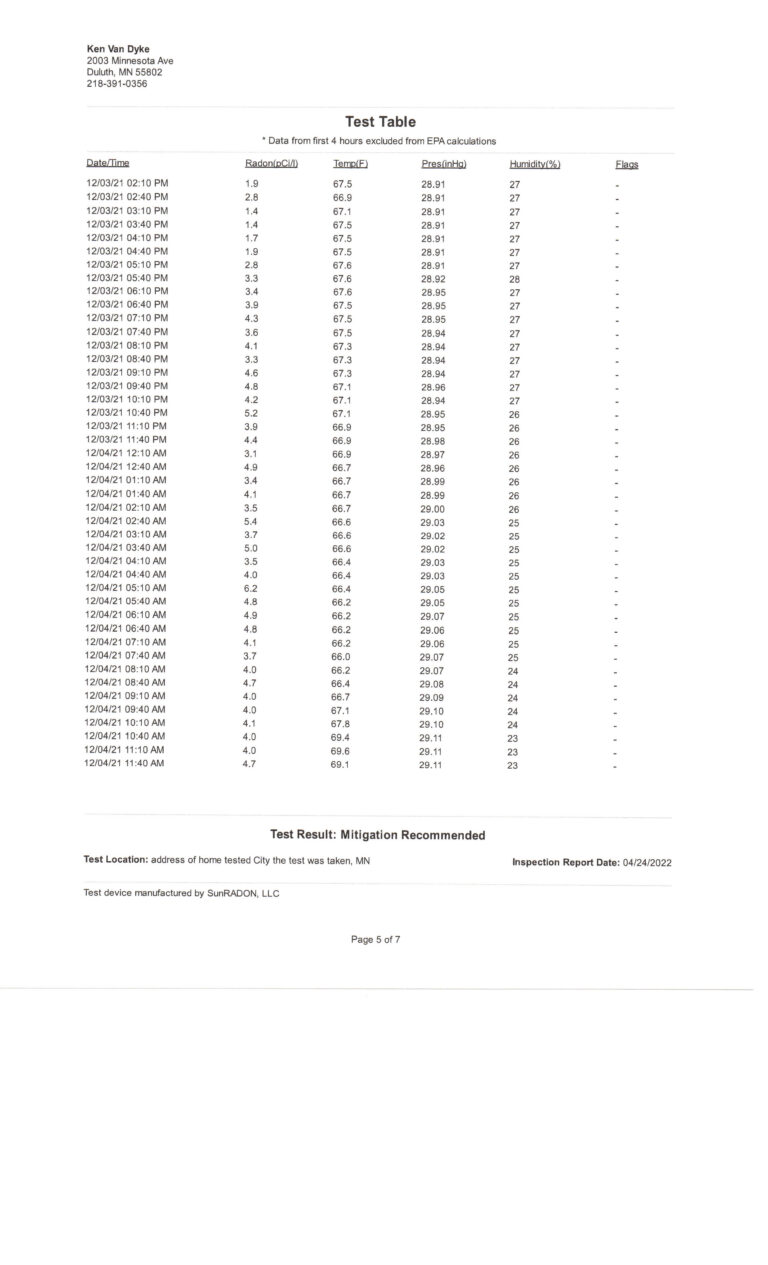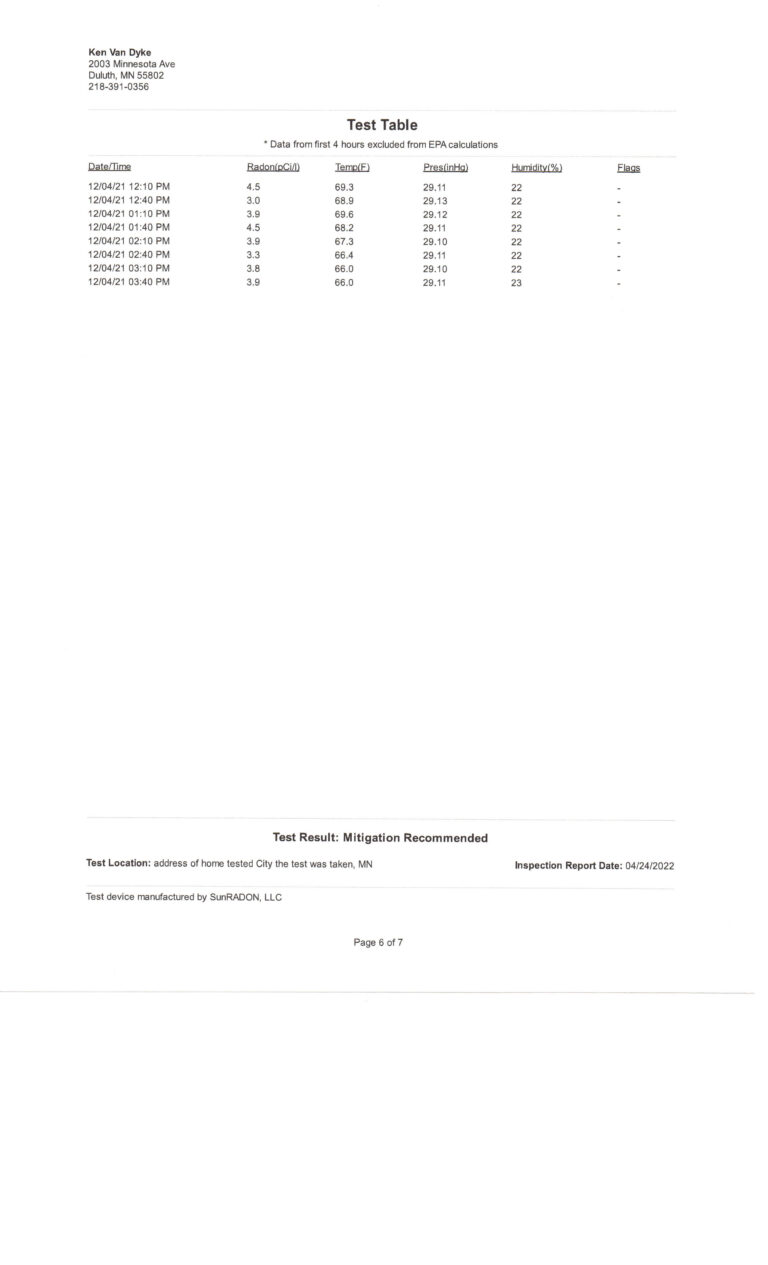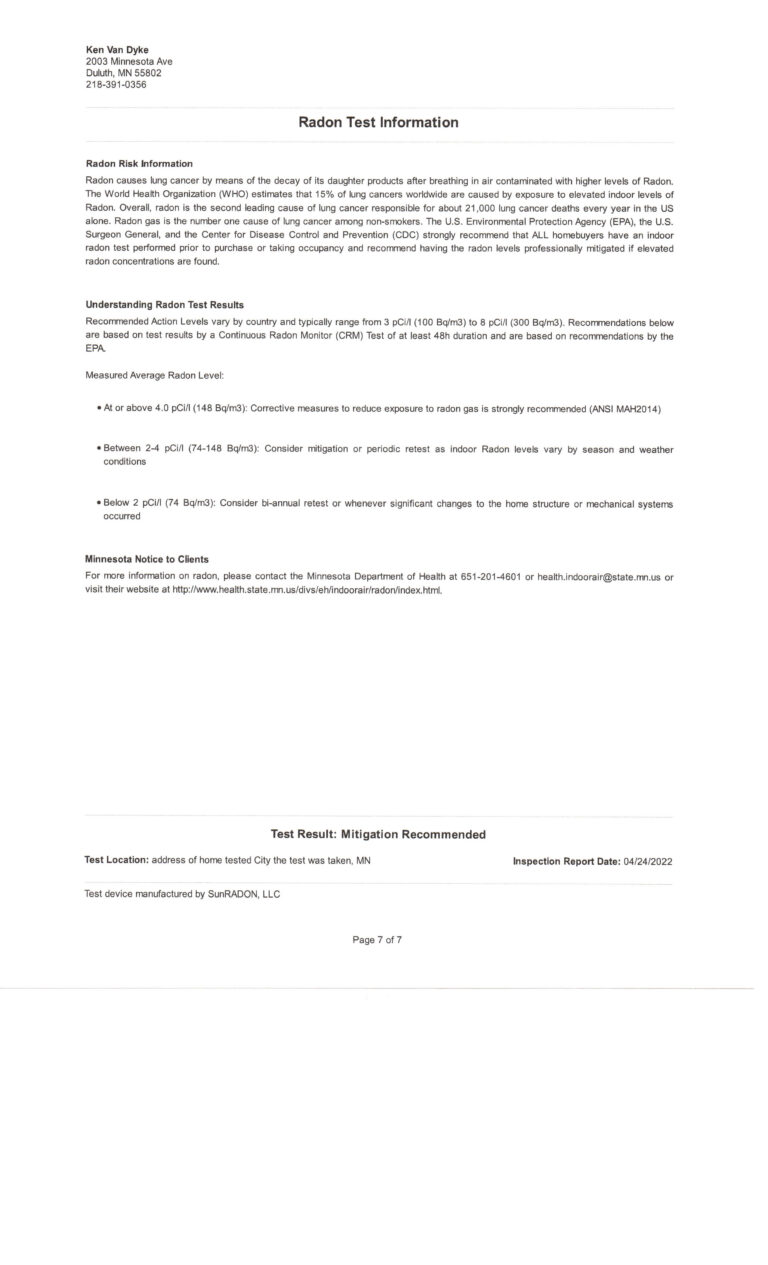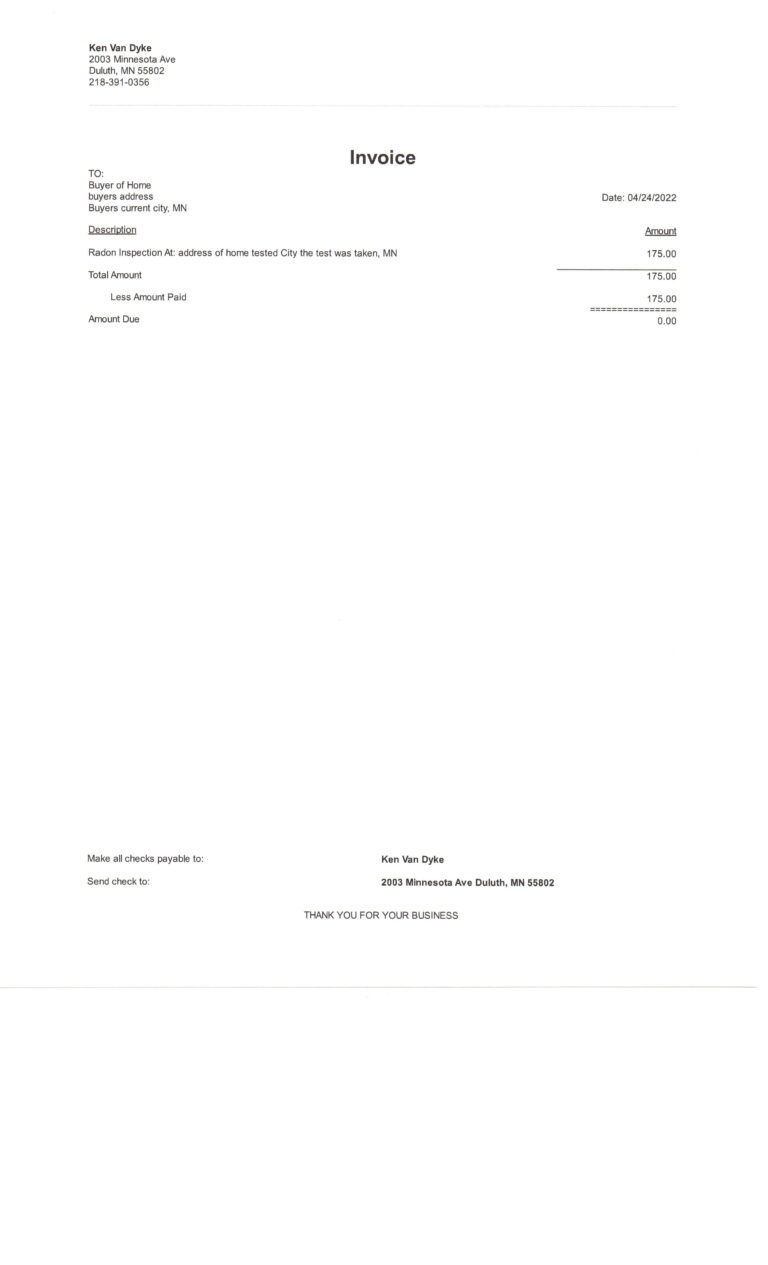Van Dyke Home Inspections provides Radon inspections for both residential and commercial properties.
What is radon?
Radon is a colorless and odorless gas that comes from the soil. The gas can accumulate in the home. Radon gas decays into fine particles that are radioactive. When inhaled, these fine particles can damage the lungs. Exposure to radon over a long period of time can lead to lung cancer.
It is estimated that 21,000 people die each year in the United States from lung cancer due to radon exposure. A radon test is the only way to know how much radon is in your home. Radon can be reduced with a mitigation system.
Where does radon come from?
Radon is produced from the natural decay of uranium and radium, found in rocks and soil. Uranium breaks down to radium, and radium eventually decays into the gas radon. Radon gas is in the soil and common throughout Minnesota. Because soil is porous, radon moves up from the soil and into the home. It can then accumulate in the air and become a health concern.
Radon in Minnesota
Radon is a serious public health concern in Minnesota. The average radon level in Minnesota is more than three times higher than the U.S. radon level. This is due to our geology and how our homes are operated. Minnesota homes are closed up or heated most of the year, which can result in higher levels of radon. In Minnesota, more than two in five homes have radon levels that pose a significant health risk.
To view additional resources, visit the MN Dept of Health Radon Website.
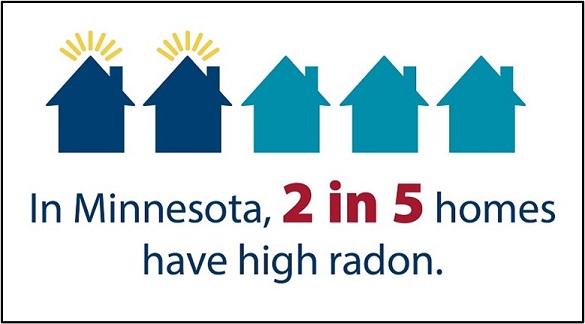
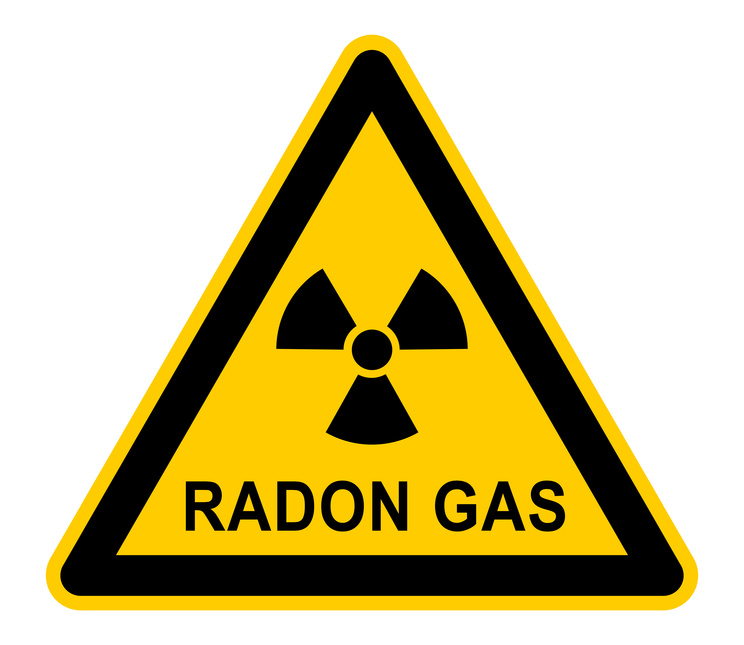
Radon Inspections
Radon testing and mitigation are not required during real estate transactions, but testing is highly recommended. MDH recommends a licensed radon professional conduct testing during real estate transactions when an unbiased third-party is desired. Buyers and sellers in a real estate transaction can negotiate radon testing, radon mitigation system installation, and who is responsible for the costs. Ultimately, it is up to the buyer to decide what is an acceptable level of radon.
